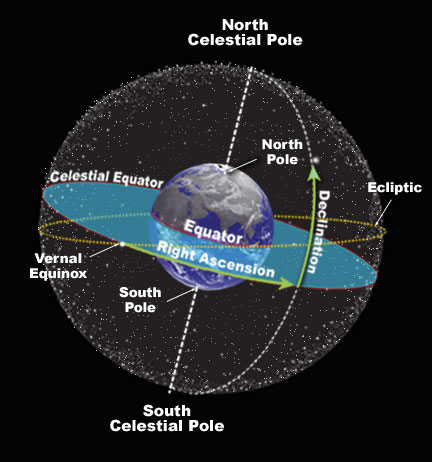We can start off easy with Diurnal Motion. You all know that the sun rises east to west. It is the same thing for the planets, the stars, and our moon. Everything takes about 24 hours to complete a circuit. From here, we can conclude that a star high in the sky (6hours) will NOT be visible in another 6 hours, for it will have set.

With Diurnal motion out of the way, we can move onto the Celestial Sphere. Simply imagine that the stars are rotating on a giant sphere around the earth. The sphere has a north pole and a south pole, named South Celestial Pole(SCP) and North Celestial Pole (NCP). Of course, there is a celestial equator, simply an extended version of Earth’s equator. The angle at which the celestial equator goes through the horizon is 90degrees minus your latitude.

The celestial poles never really move, therefore, stars close to the NCP never set below the horizon. Isn’t that fascinating? People in the northern hemisphere can never see the SCP and vice versa! Sadly, this means that northern hemisphere people can not see constellations that lay near the NCP and people in the southern hemisphere can not see constellations near the NCP.
So now the real fun begins! You can estimate where a star will be in the night sky just by knowing the stars rotations. Believe it or not, the stars rise earlier every night by FOUR MINUTES! The reason? A stars rotation time is 23 hours and 56 minutes. So just know that stars rise 2 hours earlier every month.
I know this is a lot, so I will split this into 2 parts. If you have any questions about locating constellations, you can put them in the comments and I will answer them in the next blog.
This blog was written by,

